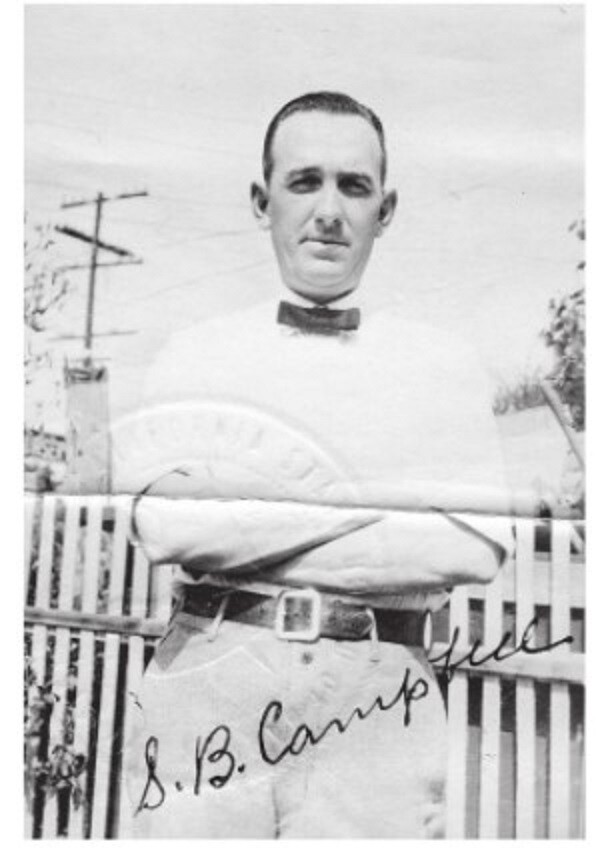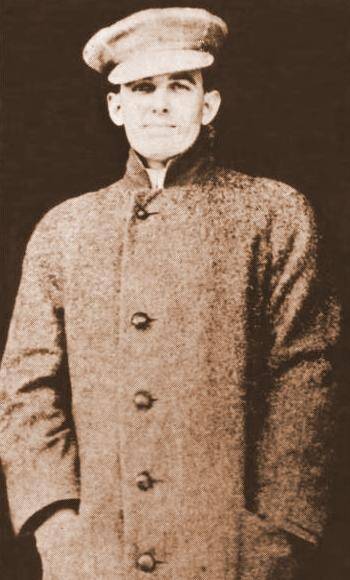
When I get a message from Ed Berlin, it gets my immediate attention. Last month I received a most fascinating document Ed was passing along, knowing of my interest in the accuracy of Brun Campbell’s stories. It was a copy of an article on Campbell’s early life, meticulously researched by an Austrian author, Konrad Nowakowski. It appeared in the July 2020 quarterly edition of Names & Numbers (Issue 94), published in The Netherlands by the Names & Numbers Foundation.
I felt, and others agreed, it contains important new research and needs to be available for U.S. readers. Gratefully, the Names & Numbers editors granted permission for the work to appear in this edition of The Syncopated Times.
For a long time now, I have been trying to show that several of Brun Campbell’s stories supported my theories about the naming of Joplin’s “Maple Leaf Rag,’ and that Campbell’s writing would shed more light on the mysterious Otis Saunders. Many of the tales “The Ragtime Kid” told in the 1940s gained semi-traction with the early writers of ragtime history. So, I had always hoped that Campbell’s stories would somehow emerge from suspicion to fact and we would finally have definitive answers to some of our ragtime mysteries.
As I read Konrad Nowakowski’s paper I was so captivated by the thoroughness of his story that it did not dawn on me immediately that everything of Campbell’s I was pinning my hope on was being dashed as you will read in this issue.
I also quickly realized the value that the Campbell letters to the Sedalia newspaper editors back in the 1940s that Charles Hanna had responsibly kept all these years had great value. (TST, May 2018 p. 8) Charles donated copies to the Archive I am curating and they now take on new meaning under Nowakowski’s scrutiny. Sure enough, within days of forwarding the transcripts, he began sending back detailed ways the letters confirm his earlier findings. As an encouraging aside, I believe he plans, when his time allows, another article on “Brun’s imaginary Sedalia,” based on the letters provided by Charles Hanna.
As we corresponded over the past month, I became more and more fascinated by this talented researcher of musical Americana living and working in Vienna, Austria. I learned that he is a judge with strong avocational interests in piano blues. He kindly provided me with a detailed description of his interests, and I have found many of his articles on-line.

He discovered Brun Campbell in the 1970s and liked his music. He began to collect Campbell’s rare recordings and to research with Dick Mushlitz and Ben Conroy, in 2000, when the David Thomas Roberts CD came out. His interest was renewed by Larry Karp’s biography, Brun Campbell: The Original Ragtime Kid, published by McFarland in 2016. This led to a first article in Names & Numbers 93, April 2020, which is an annotated Campbell discography.
And so, it is probably time to put many of the Brun Campbell stories away for good. As Nowakowski points out, he was not offering primary information, though Brun probably had a primary source in Otis Saunders for many of the actual details into which Brun wove roles for himself.
Campbell’s compositions, however, deserve credit. His work has also been recognized by Richard Egan, Jr. in Brun Campbell: The Music of The Ragtime Kid, a collection of transcriptions of Campbell pieces in 1993; David Thomas Roberts, The Collected Brun Campbell, 2000; The Delmark CD, Brun Campbell, Joplin’s Disciple, 2001; and recently David Reffkin’s American Ragtime Orchestra, Essays in Ragtime, 2016.
Furthermore, I personally feel that Campbell’s obsession with promoting and publicizing Scott Joplin and the origins of Classic ragtime in Sedalia deserve attention as well. The plaque in Sedalia’s Lincoln High School inspired by Campbell honored Joplin in 1951. His influence on people like Bob Darch and others in the 1950s led to Sedalia’s Joplin tribute by Darch and the Joplin/Maple Leaf Rag Monument presentation during the city’s Centennial celebration, 1960.
Those events were the precursors of Sedalia’s ragtime festivals begun in the 1970s and continuing to the present. Hopefully, we will read more from this amateur but very accomplished European Jazz historian through a collaboration between N&N and TST. This will open the door for broader international attention to our common interests in traditional jazz and ragtime.
See: Brun Campbell: Notes on his Early Life and Unknown Pictures, by Konrad Nowakowski
Larry Melton was a founder of the Scott Joplin Ragtime Festival in 1974 and the Sedalia Ragtime Archive in 1976. He was a Sedalia Chamber of Commerce manager before moving on to Union, Missouri where he is currently helping to conserve the Ragtime collection of the Sedalia Heritage Foundation. Write him at lcmelton67@gmail.com.






















